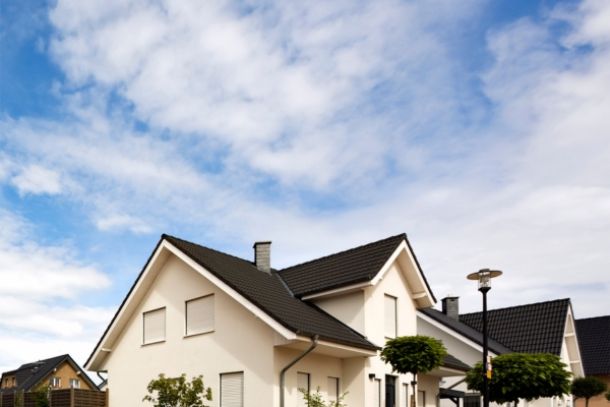Smart Wooden House Automation: Enhancing Home Efficiency
Smart Wooden House Automation: Enhancing Home Efficiency
Smart technology is transforming how we live, and wooden homes are no exception. Integrating automation and digital control systems into wooden house construction not only enhances energy efficiency and security but also elevates overall comfort and convenience. “Smart Wooden House Automation: Enhancing Home Efficiency” explores practical strategies and technologies that enable DIY builders to create intelligent, responsive wooden homes without sacrificing the natural beauty and warmth of timber.
Introduction
Wooden homes have long been admired for their timeless charm and natural insulation. Today, the integration of smart technology allows homeowners to enjoy a seamless blend of tradition and innovation. By incorporating digital controls, sensor networks, and automated systems, you can optimize energy usage, improve security, and create a highly adaptive living environment. This guide examines key aspects of smart automation in wooden homes, from planning and system selection to installation and long-term maintenance.
Planning for Automation
Assessing Your Needs:
Begin by identifying your priorities. Do you want to optimize energy consumption, enhance security, or streamline daily routines? Make a list of functionalities you desire—such as automated lighting, climate control, security systems, and smart appliances. Understanding your needs will guide your choice of technology and the scope of your automation project.
Digital Design Integration:
Use computer-aided design (CAD) and Building Information Modeling (BIM) software to integrate automation planning into your overall home design. These digital tools allow you to map out where sensors, control hubs, and wiring will be placed, ensuring that smart systems are seamlessly embedded in your wooden structure. Early integration of automation plans can prevent costly modifications later on.
Budgeting for Technology:
Smart home systems can represent a significant investment. Develop a detailed budget that accounts for both the hardware (sensors, controllers, smart appliances) and installation costs. Consider the long-term savings from energy efficiency and reduced maintenance, which can justify the initial expenditure.
Key Smart Automation Systems
Automated Climate Control:
A smart thermostat is one of the most effective tools for optimizing energy usage. These devices learn your schedule and adjust heating and cooling based on occupancy and external weather conditions. Integrating your HVAC system with smart sensors ensures a consistent indoor climate, reduces energy waste, and enhances overall comfort.
Lighting Control Systems:
Automated lighting systems adjust the brightness and color of lights based on natural light levels and occupancy. Motion sensors and dimmers can further enhance efficiency by turning off lights in unoccupied rooms. Smart lighting not only reduces energy consumption but also creates dynamic, mood-enhancing environments tailored to different activities.
Security and Surveillance:
Integrate a smart security system that includes door and window sensors, surveillance cameras, and motion detectors. These systems can be monitored remotely via smartphone apps, offering real-time alerts and control. Advanced security features, such as facial recognition and automated alarms, provide an extra layer of protection while maintaining the natural aesthetic of your wooden home.
Energy Management and Renewable Integration:
Smart energy management systems monitor energy consumption in real time and provide actionable insights to optimize usage. Pairing these systems with renewable energy sources—such as solar panels—can create a self-sustaining energy ecosystem. Automated controls adjust energy distribution based on demand, ensuring that your home operates at peak efficiency.
Installation and Integration
Planning Conduits and Wiring:
When constructing a wooden home, it’s essential to plan for the integration of smart systems from the outset. Include channels for wiring and conduit paths in your blueprints to facilitate the installation of sensors and control devices without disturbing the natural structure. Early planning ensures that automation elements are seamlessly embedded into the home.
Hybrid Construction Techniques:
Combine traditional wooden construction with prefabricated smart modules. For instance, wall panels pre-integrated with sensors or smart vents can be assembled off-site and then installed in the house. This hybrid approach leverages the precision of modern manufacturing while preserving the handcrafted charm of wooden architecture.
Testing and Calibration:
Once installed, thoroughly test all systems to ensure they communicate effectively and operate as intended. Calibrate sensors and control devices to align with your specific needs. Regular system tests and updates will ensure that your smart home remains reliable and efficient over time.
Long-Term Maintenance and Upgrades
Routine Monitoring:
Smart systems often come with diagnostic tools that monitor performance and alert you to issues. Regularly check system logs, sensor statuses, and energy consumption reports to identify potential problems early. Maintenance routines should include both the technological components and the traditional wooden structure.
Software Updates and Technology Upgrades:
As technology evolves, firmware and software updates for your smart devices will be essential. Stay informed about new features and potential upgrades to ensure that your home remains at the cutting edge of smart automation. Consider modular systems that allow easy integration of new technologies without major overhauls.
User Training and Adaptability:
Ensure that all household members are familiar with the smart systems. User-friendly interfaces and comprehensive guides help maximize the benefits of automation. Adaptability is key—be prepared to adjust settings and explore new features as your lifestyle changes over time.
Conclusion
Smart Wooden Home Automation represents a fusion of traditional craftsmanship with modern technology, offering enhanced comfort, security, and energy efficiency. By carefully planning your automation needs, integrating digital tools in the design phase, and embracing modern smart systems, you can transform a wooden home into a dynamic, future-ready living space. The journey towards automation is ongoing—routine maintenance, system upgrades, and user engagement ensure that your home continues to deliver the benefits of modern technology while retaining the natural beauty of wood. Embrace the innovation and create a home that is as smart as it is charming.


